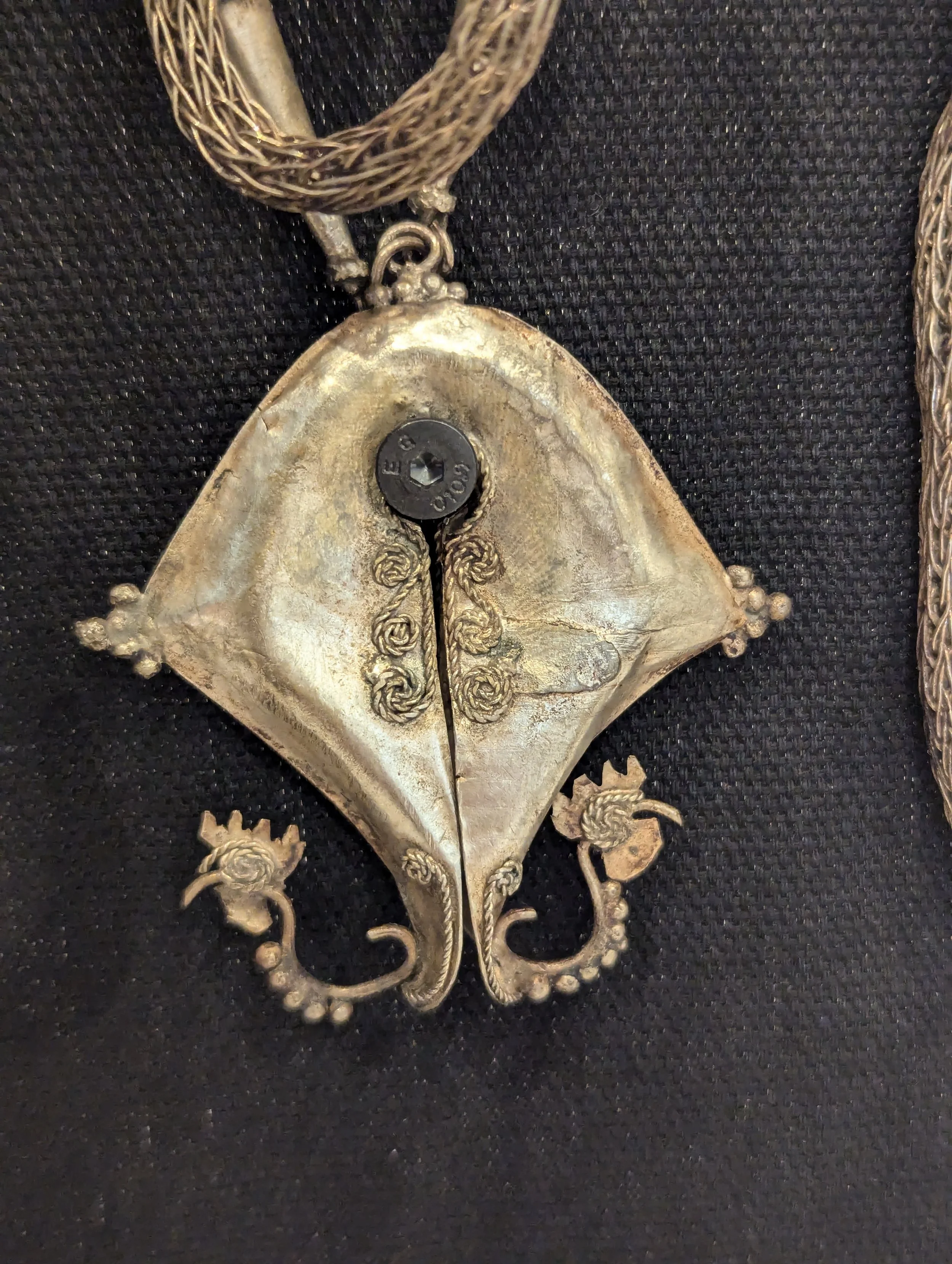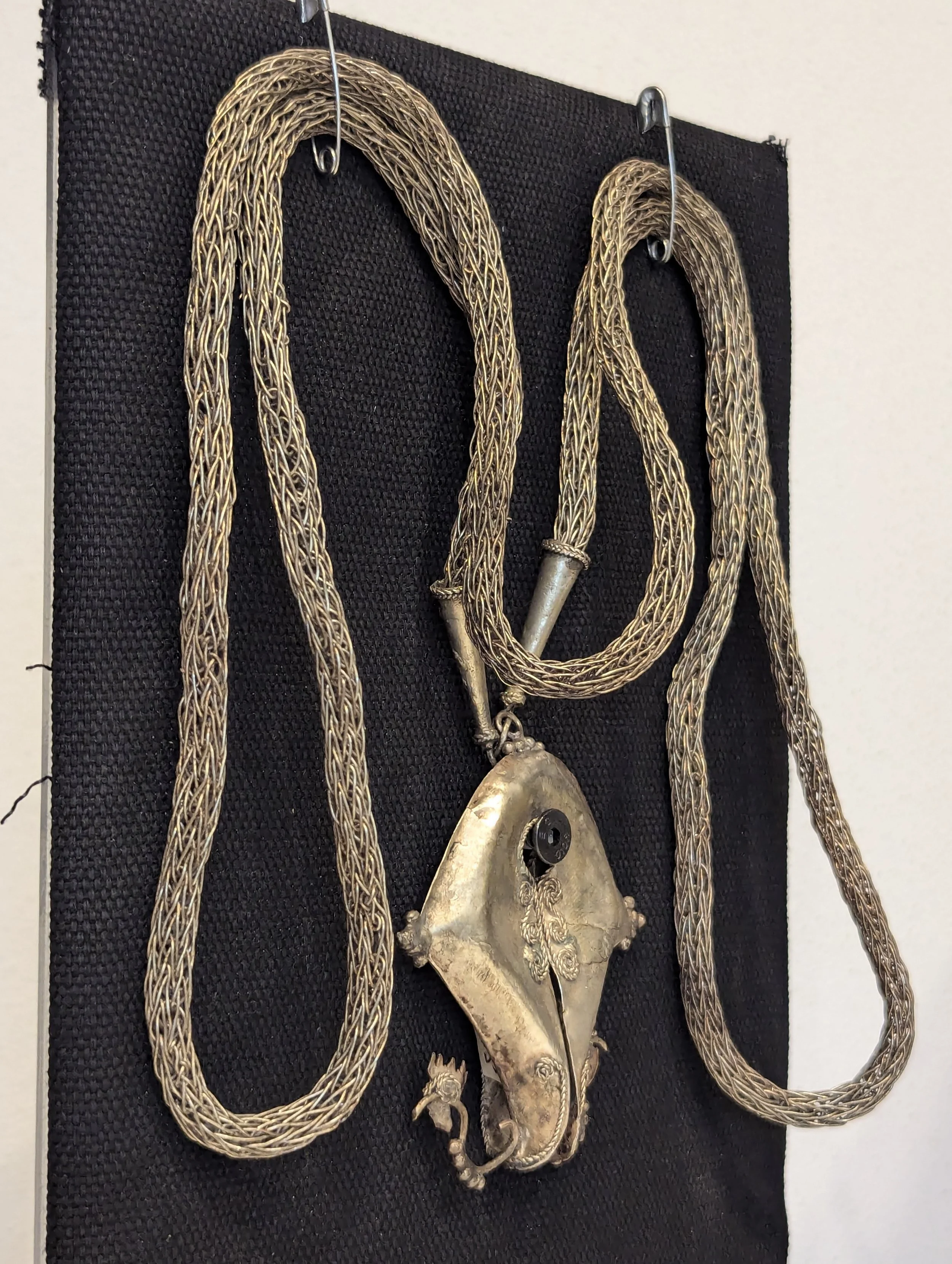Vintage Sumba Necklace with Mamuli pendant with stand #2-ex. Japenese collection
Vintage Sumba Necklace with Mamuli pendant with stand #2-ex. Japenese collection
MEASUREMENTS: cm 6 x 5.5 x 1.5 // 2.4" x 2.1" x 0.6". circonference: 46.5 //118 cm weight: 50 g
This metal necklace showcases a traditional Mamuli pendant, recognized for its symbolic representation of fertility and life-giving power. What distinguishes this particular piece is the inclusion of two roosters on either side of the pendant's lower section, a detail often linked to strength, courage, and vigilance across various cultures. The necklace likely originates from Sumba Island, Indonesia, and was part of a Japanese collection, still retaining its original tag. A display stand is included in this lot.
Mamuli are metal ornaments crafted by the Sumba people of Indonesia, playing a central role in the megalithic societies of western Sumba, such as the Anakalang society. Their distinctive shape, resembling the female genitalia, symbolizes fertility and the life-giving role of women. These ornaments are considered heirloom pieces, highly valued in ritualistic exchanges during ceremonies.
Mamuli are divided into two categories: simple (lobu) and decorated (karagat). The lobu mamuli have a diamond-shaped body with a concave center, featuring a round hole and slit, representing female sexuality and reproductive power. The more elaborate karagat mamuli, also known as ma pawisi ("those with feet"), have additional finials at the bottom of the diamond shape, often giving them an omega-like form. These finials are adorned with figures such as roosters, cockatoos, horsemen, buffalo, goats, skull trees, or warriors, symbolizing male strength and power. As a result, the karagat mamuli are viewed as masculine, while the lobu mamuli are considered feminine.
During the colonial period, more intricate, Baroque-style Mamuli were produced, featuring battle scenes and occasionally movable parts.
PROVENANCE:
This Mamuli pendant comes from the collection of Mitsuharu-san, a Japanese manager who traveled extensively across Indonesia from the 1970s until his passing in 2022. Hailing from Hokkaido, Mitsuharu-san played a significant role in the development of the Japanese food chain "Hok-Ben" (Hokka-Hokka Bento), which grew to over 140 locations across Java and Bali. Mitsuharu-san’s frequent travels across Indonesia, particularly to the smaller Sunda Islands—such as Lombok, Flores, Sumba, Timor, and Sulawesi—ignited his passion for Indonesian tribal art. Over the years, he curated a remarkable collection of ethnic jewelry from East Indonesia, of which I have had the honor of acquiring select pieces that I now proudly offer here on eBay.









